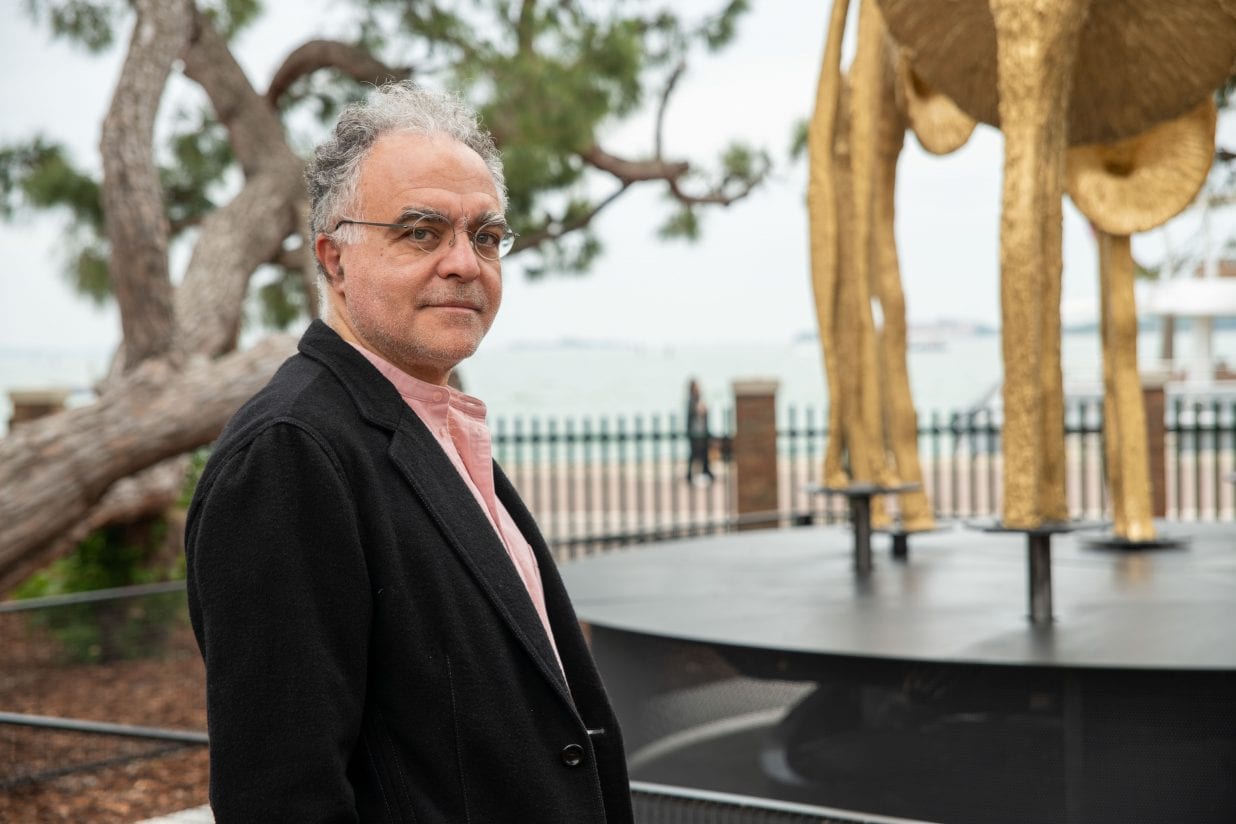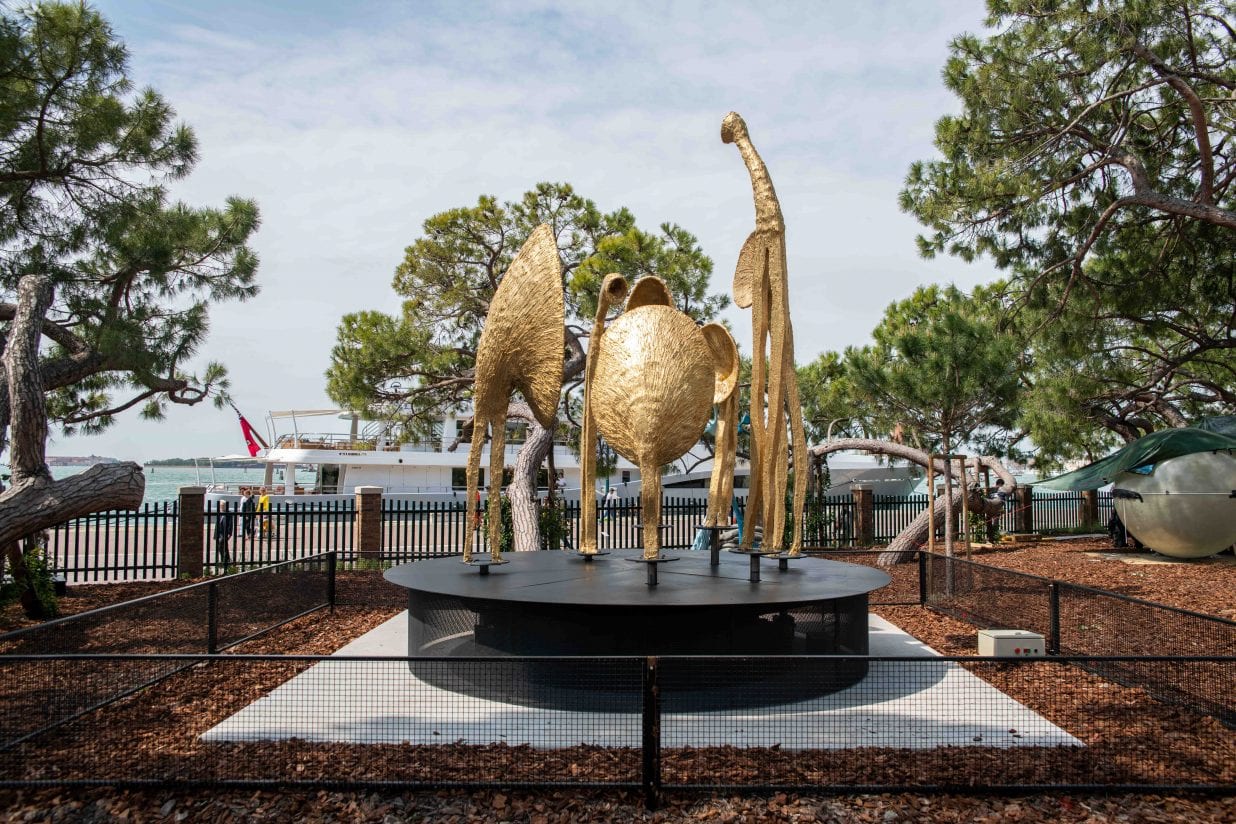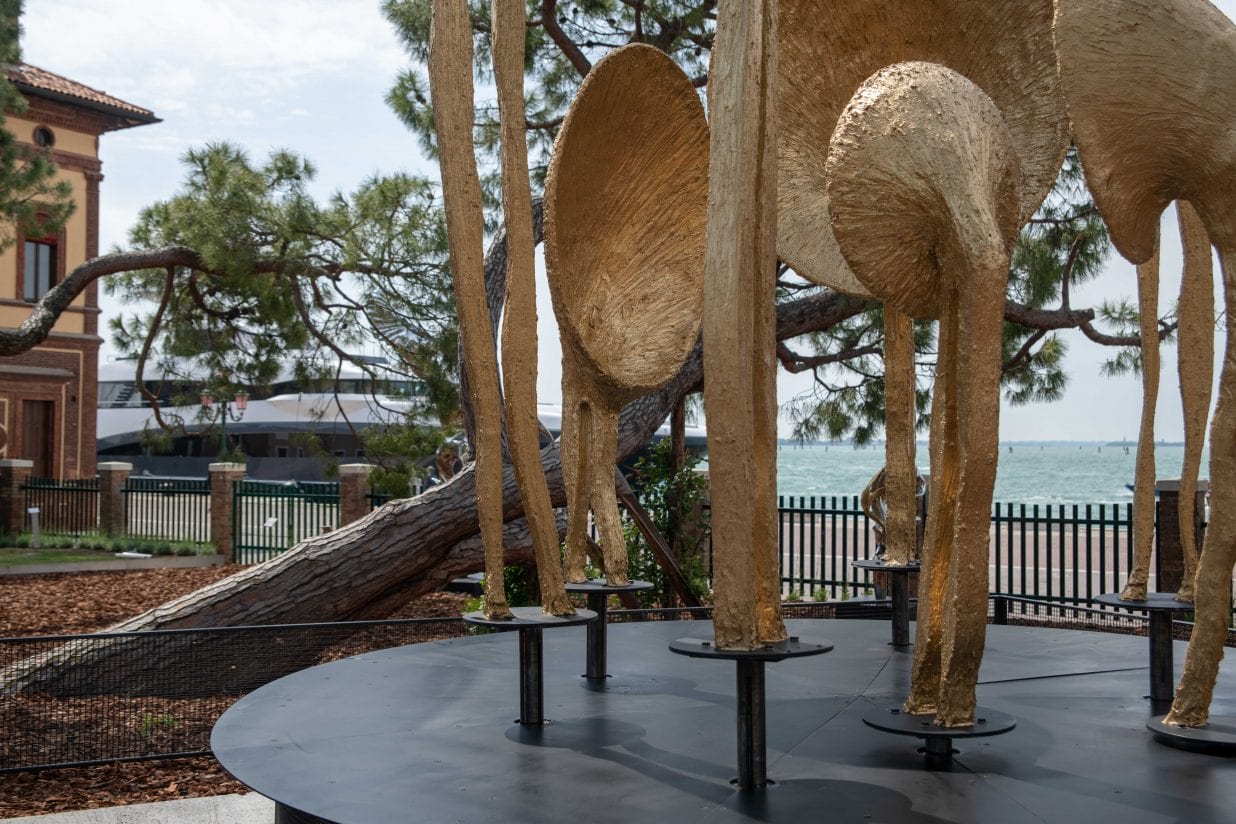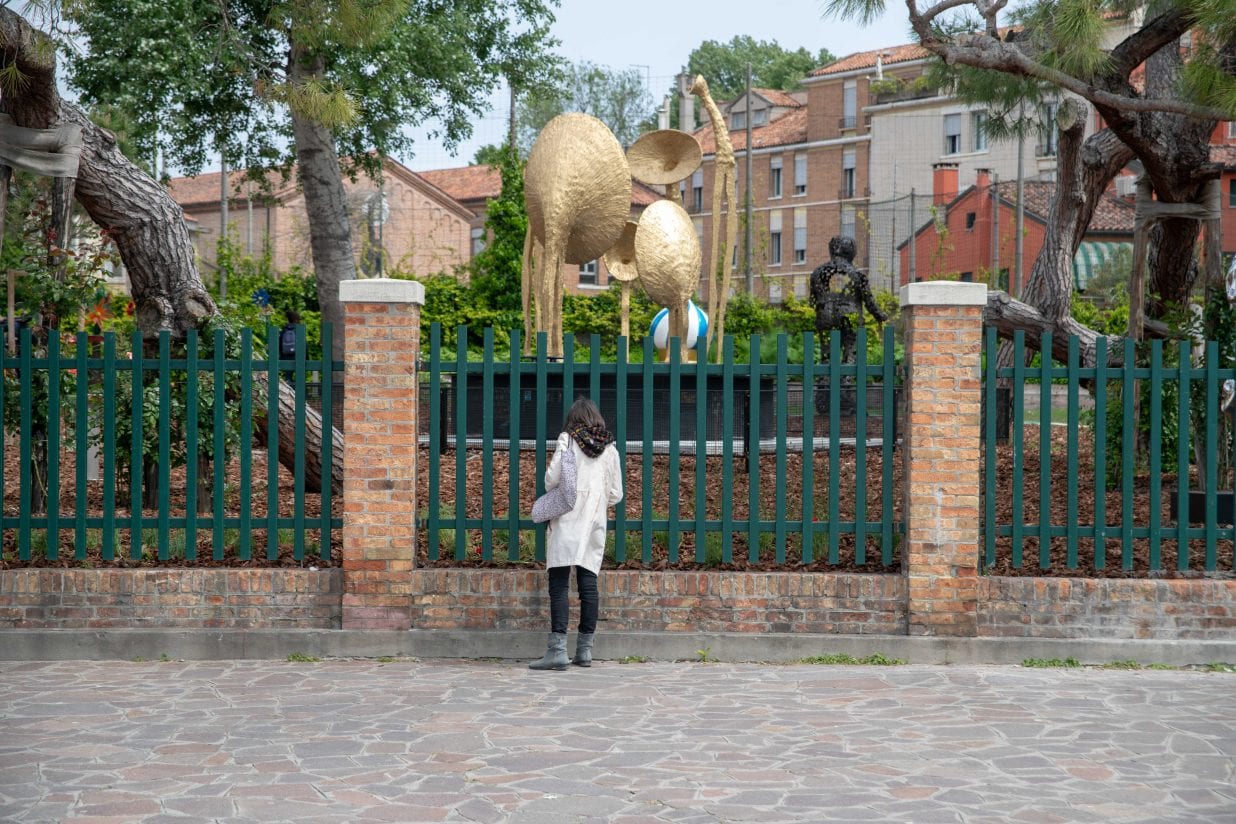Locked in Dialogue
SCALE is in conversation with Nadim Karam whose sculpture Politics of Dialogue: The Merry-Go-Round was presented as part of the group exhibition, Personal Structures, at the Venice Art Biennale.
Lebanese artist Nadim Karam presented a new large-scale kinetic sculpture entitled Politics of Dialogue: The Merry-Go-Round as part of the group exhibition “Personal Structures” hosted by the European Cultural Centre (ECC) in the context of the Biennale Arte in Venice. This art form is on view from May 11 to November 24, 2019.
Situated on the waterfront in the Marinaressa Gardens, the installation consists of seven elongated figures assembled in a circle and mounted on a rotating platform. Facing each other, the gold-painted figures morph into megaphone-like forms that seem to be locked into an intense dialogue. But as the platform turns to the audible tune of a carousel and the figures move up and down, they each take a turn to lead a discussion that continues to go round and round.
“Politics of Dialogue: The Merry-Go-Round could be partly taken as Brexit, or the EU itself. When the countries meet they don’t necessarily come away with any results. It’s the same in Lebanon, and all over the world. We see this happening more and more, democracies are losing themselves in dialogue,” says Nadim Karam.
Karam extracts playful absurdity from adversity, pointing to the multilayered complexities of our societies. SCALE in conversation with Karam.
SCALE: Tell us how Public or Urban Art serves the society and helps foster dialogue. Explain this in perspective of your work in Beirut.
Karam: You cannot separate stories of people from the stories of the land. Each one of us is characterised by the accumulation of moments generated by our own individuality and memory. At the same time, any place we experience has its history rooted in the stories of its ancestors. Memories of the past are shaped into cultures, and it is up to us to create new stories.
For me, to create an urban art project is to communicate with the essence of a place and come to a better understanding of its people, culture and dynamics. I try to project a dream for the place that only materialises when the city and its people get involved and begin working with me. Urban art projects are a negotiation with the context. Rather than being imposed, there is a need for give-and-take between the context and the artist until an understanding is reached. The resulting project is the visual expression of our dialogue.
Archaic Processions was a series of sculptures set in post-war Beirut. I wanted to bring an element of the absurd to the city as it emerged from years of fighting. My sculptures embarked on itinerant journeys across the landscape as it underwent a transitory period of rebuilding its war-damaged infrastructure, encouraging its citizens to dream.
SCALE: How has being visible in The Venice Biennale helped your work?
Karam: The Venice Biennale is the global stage for contemporary art, a place to where creatives, artists and influencers gather all together. It’s one great party, but more than that it is a melting pot of influences and cultural dialogues.
It is interesting to see countries interact in a biennale context that isn’t necessarily aligned politically. This was something I was thinking about while producing my Biennale work Politics of Dialogue, how with dialogue we don’t always reach anywhere, we just rotate around the surface like a merry-go-round.
SCALE: How do you think Middle East artworks are being received and appreciated around the world?
Karam: Middle Eastern art is clearly growing in the international arena; its modern artists are being appreciated and there are more than 35 contemporary art participants from the Middle Eastern region at the 2019 Venice Art Biennale, which is a good indication. I think that art from the Middle East is probably receiving more attention because it reveals another dimension of the region than that which media tends to show the world. People are curious to discover middle-eastern creativity, and how artists relate to the socio-political aspects of the region.
SCALE: Tell us more about Politics of Dialogue and how it was conceived and made.
Karam: All my projects grow from my sketchbook, where I constantly record my raw ideas. I was travelling a lot, and thinking about the concept of dialogue and trying to interrogate its meaning.
Dialogue assumes the creation of a level playing field; however, it often happens in isolation from the area or population of concern becoming thus futile and obsolete. Politics of Dialogue is about communication confined in a bubble. The longer the dialogue, the more deafening it becomes. It is a trapped dialogue, rotating upon itself, and offered to the observer on a shiny platter.
SCALE: Which are the other artists and art forms that inspire you?
Karam: I am attracted to a huge range of architects and public artists who work in relation to space and time, and who have a specific interest in existential issues. The growth of sculpture in both its ephemeral and eternal aspect is at the heart of my research and work. Very recently, a series of new sketches have given me leeway for exploring new spatial expressions.
SCALE: Your thoughts on the art and museum scene in Qatar when you exhibited here at the Anima Gallery.
Karam: I think the opening of the National Museum is a very important milestone, and I look forward to seeing its evolution. I am in the process of discussing the possibility of creating a public artwork for the city of Doha, which is an indication that the city and its cultural leaders are increasingly aware of the importance of art in the city.
During my exhibition at Anima Gallery, I noticed that there is a huge amount of research, artist residencies and exhibitions in institutions in Doha, and I was delighted to discover the Fire Station artistic platform, where I gave a talk titled “Urban Stories”.









